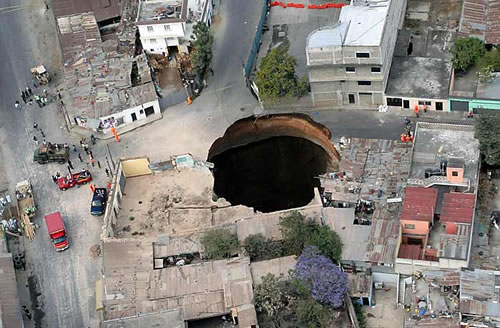As of the close of trading on March 1, 2013, the virtual portfolio I created in Sustainable Energy stocks on 12/21/12 is up $1.3 Million, 16.31%, from $8.0 Million to $9.3 Million. The Fossil Fuel Reference Virtual Portfolio is up 1.71%, from $8.0 Million to $8.137 Million in the same time frame. The Dow Jones Industrial Average is up 7.63% and the S&P 500 is up 6.15%.
Category Archives: Connecting the Dots
Announcing the Popular Logistics Virtual Portfolio in Information Technology
Hot on the heels of the December 21, 2012 launch of the Popular Logistics Virtual Portfolio in Sustainable Energy, here, up 22.36%, I am announcing the launch of the Popular Logistics Virtual Portfolio in Information Technology. Roughly $1.0 million in Apple, Google, HP, IBM, Intel, Microsoft, and Oracle.(Their investor relations pages are Apple, Google, HP, IBM, Intel, Microsoft, and Oracle.)
| Tech Virtual Portfolio | ||||
| Item | Stock | Price | Shares | Total |
| 1 | Apple | $446 | 2,242 | $1,000,000 |
| 2 | $795 | 1,258 | $1,000,000 | |
| 3 | HP | $17 | 59,559 | $1,000,000 |
| 4 | IBM | $198 | 5,051 | $1,000,000 |
| 5 | Intel | $20 | 50,000 | $1,000,000 |
| 6 | Microsoft | $27 | 37,037 | $1,000,000 |
| 7 | Oracle | $24 | 41,667 | $1,000,000 |
| total | $7,000,000 | |||
| Table 1. Acquisitions, Start of Business, 2/22/13 | ||||
Generally speaking, here’s what I expect:
- Apple, IBM: I expect to significantly outperform the Dow Jones and S&P 500.
- Google: I expect to perform in line with the Dow Jones and S&P.
- HP: An investment in HP is speculative. Whitman may turn the company around. The stock might wildly outperform the Dow & the S&P. As Gerstner might say, however, it’s hard to teach an elephant to dance. The stock may plummet.
- Intel, Oracle, I don’t know enough to have an expectation.
- Microsoft may become a leading indicator of the economy. Thus, if the S&P does well, Microsoft may do better.
These are in table 2, below
Gold Bricks and Sink-Holes – The Risk & Reward of Fossil Fuel, Solar & Wind
 On Dec. 21, 2012, with virtual portfolios of 7 sustainable energy and 7 fossil fuel companies, I launched the Popular Logistics Sustainable Energy simulation, here.
On Dec. 21, 2012, with virtual portfolios of 7 sustainable energy and 7 fossil fuel companies, I launched the Popular Logistics Sustainable Energy simulation, here.
On Feb. 8, 2013, after 6 weeks, after exercising virtual options to invest in 2 additional companies at 12/21/12 prices, I reported the results, here.
- The Sustainable Energy portfolio is up 12.6%
- The Fossil Fuel portfolio is up 5.09%.
- The Dow Jones Industrial Average is up 6.52%
- The S&P 500 is up 5.52%.
- The Sustainable Energy Portfolio is up significantly more than the Fossil Fuel Portfolio, and the major indices.
- The Fossil Fuel Portfolio is up, but lags the major indices.
These results are not that surprising. Continue reading
Forget the Great Wall – Meet The Great Haze
忘了长城 – 我们现在有大的雾度
“Forget the Great Wall – We Now Have the Great Haze”
– Translation by Google
In the 1960’s and 1970’s astronauts showed that we could see the Great Wall of China from space. Today, it’s the Great Haze of China that we can see from space . The New York Daily News, here, published this image, taken by NASA in January 12, 2013 (here) when the Air Quality Index, AQI, reached 775.
The AQI was established by the US EPA. AQI above 300 is considered dangerous. AQI at 775 is probably deadly.
What Next? – For the 21st Century
What should we do now?
- Strengthen the safety net.
- Reverse the Citizens United and Florence v Burlington rulings.
- Place reasonable restrictions on Second Amendment rights, as reasonable restrictions exist on First Amendment rights. And tax properties and income of religious institutions.
- Address Climate Change.
- Develop a Renewable & Sustainable Energy Infrastructure – Clean & Green within 15.
As President Obama said, in his Second Inauguration, (White House . Gov / The Atlantic)
“The commitments we make to each other … do not sap our initiative; they strengthen us. They do not make us a nation of takers; they free us to take the risks that make this country great.
“We will respond to the threat of climate change, knowing that the failure to do so would betray our children and future generations.
“The path towards sustainable energy sources will be long and sometimes difficult. But America cannot resist this transition, we must lead it. “
Barbara Buono will Win, Apple will Grow, Assad will Die and other forecasts for 2013
In “The World Will Not End and Other Predictions for 2012,” I developed a set of predictions for 2012, the accuracy of which were described by me in 2012 Revisited. Here are my predictions for 2013. As noted last year, I am extrapolating from patterns that I see – also known as reading tea leaves.
- New Jersey’s Governor Chris Christie will lose his re-election campaign to NJ Senator Barbara Buono, pictured with me, above. The Tea Party Republicans will not compromise with President Obama, Democrats in the House and Senate, or the Republican Leadership in the House and Senate. They will, again, threaten to shut-down the U. S. government.
- A major hurricane will batter the Gulf Coast or the Eastern Seaboard, causing $25 to $80 Billion worth of damage. FEMA will be there to help.
- Apple will continue to report record sales and record profits. It will close out the year with a market capitalization around $650 Billion, up from today’s level of $470 Billion. If HP‘s Board doesn’t fire CEO Meg Whitman, HP may return to profitability. Dell‘s market share and market capitalization will fall.
- The wind and solar industries will increase in the US and globally, particularly Japan, which is now planning to have 100% renewable energy by 2040, and India, which is learning from the mistakes being made in China, Japan, and the West.
- Large industrial conglomerates will continue to design and sell wind turbines, LED lighting, PV solar modules and more energy efficient medical devices, etc.
- Assad will fall – and will die – by the end of 2014.
- Mohammed Morsi and the Moslem Brotherhood will consolidate power in Egypt, but will not abandon the Egypt – Israel peace treaty.
- Iran will provide weapons and support to Islamists in the Middle East, North Africa, and Central Asia.
- Israel, feeling threatened, and very concerned regarding Iran, Syria and Egypt, will ignore pressure to negotiate with the Palestinians.
- Roger Saillant and RP Siegel will not win any awards for their novel, Vapor Trails.
For an overview of the details see below.
Securing Our Schools, Part 2
(18 of the 20 children killed at Sandy Hook. Image courtesy of Island 106.)
In response to the killing of 20 children and four teachers, Dawn Hochsprung, the school’s beloved principal, and school psychologist Mary Sherlach at Sandy Hook Elementary School, the NRA’s Wayne LaPierre’s proposed stationing armed police, at taxpayer’s expense, in every school. We at Popular Logistics, think this wasn’t thought through – or is a “red herring” meant to distract people from the real problem – close to 300 million weapons in the hands of roughly 80 million people in the United States. given the number of weapons in the USA, the number of people with weapons, the ease and lack of oversight with which people can obtain weapons, the editors of Popular Logistics, as discussed here, believe that we need to think seriously about securing our schools.
(Note that the NRA’s executive offices are at 11250 Waples Mill Rd, Fairfax, VA, 22030. The NRA can be reached via telephone to 703-267-1250, via Fax to 703-267-3985, and via e-mail at nracrdf@nrahq.org)
As with commercial aviation safety, we should start by securing, or hardening our schools. Our “back of the envelope” calculation suggests that we can do this for about $40,000 per school, and therefore $5.6 Billion for the 140,040 schools in the United States. That will be explored in Part 3 of this series. This post continues the discussion of development of a squad of officers/agents for each school, begun in Part 1.
An Armed Police Presence in Every School
Following the December 14, 2012 killing of 20 children, four teachers, the principal and psychologist in Sandy Hook Elementary School, and his mother by Adam Lanza in Newtown, Connecticut (CNN), Wayne LaPierre (bio) of the National Rifle Association gave a “Press Conference” (in which the Press were not allowed to ask any questions). He suggested that the Federal Government hire police officers for every school in the USA (full transcript: Daily Caller, Washington Post).
Left unsaid is how many new police officers we would need, and what it would cost to hire, train, and equip them. Continue reading
2012 Revisited
In “The World Will Not End & Other Predictions for 2012, here, I wrote:
- “Apple and IBM will continue to thrive. Microsoft will grow, slightly. Dell and HP will thrash. A share of Apple, which sold for $11 in December, 2001, and $380 in Dec. 2011, will sell for $480 in Dec. 2012.” (Mostly Correct, except Apple did better than I expected.)
- “The Price of oil will be at $150 to $170 per barrel in Dec., 2012. The price of gasoline will hit $6.00 per gallon in NYC and California.” (Wrong)
- There will be another two or three tragic accidents in China. 20,000 people will die. (The number of accidents was underestimate. Their magnitude was overestimated – however … )
- There will be a disaster at a nuclear power plant in India, Pakistan, Russia, China, or North Korea. (Wrong)
- Wal-Mart will stop growing. Credit Unions, insurance co-ops and Food co-ops, however, will grow 10% to 25%. (Wrong on WalMart, right on Credit Unions, altho the numbers were off.)
- The amount of wind and solar energy deployed in the United States will continue to dramatically increase. (Right. Very Right!)
- The government of Bashar Al Assad will fall. (Wrong – but there’s still time.)
- Foreclosures will continue in the United States. (sadly, true, but not as bad as it could have been – thanks to Obama)
- Arizona Sheriff Joe Arpaio will resign. Calls for Clarence Thomas to recuse himself from matters involving his wife’s clients will become louder, but Justice Thomas will ignore them. A prominent politician who says “Marriage is between a man and a woman,” or her husband, will be “outed” as gay. President Obama will be re-elected.” (Right on Obama and the American voter. Wrong on Arpaio)
- The authors of Vapor Trails will not win a Nobel Prize for literature. They will not win a “MacArthur Genius Award.” Nor will I despite my work on this blog or “Sunbathing in Siberia” and the XBColdFingers project. (Right, tho I would have like to have been wrong on this one.)
Here are the details. Continue reading
Solar Power & Electric Utilities: Is The Paradigm Shifting?
The 16-module solar array pictured above was built in 2005. It probably has 2.5 Kilowatt (KW) to 2.8 KW of nameplate capacity. In New Jersey, residential solar systems range from 3 KW to 30 KW. Most are between 4 and 10 KW. Commercial systems range from 8KW to 200 KW. Utility scale systems are in the 10 Mega Watt (MW) to 550 MW range. In 2005, the costs for small scale residential systems were around $8.50 / watt, exclusive of any incentives. Today it is probably around half that, and cheaper for the larger utility scale systems. 1.0 MW system would require 4,000 modules of 250 watts each. The system pictured above requires about 50 square feet of land.As illustrated by the photo of the Topaz array, below, a 550 MW system, like Topaz, would require 2.2 million modules, and would cover a lot of ground.
First Solar, FSLR, a $2.8 Billion company, and Sunpower, SPWR, an $840 Million company, two of the pillars of what is left of the American solar energy industry, made some interesting statements in their 2011 annual reports: Continue reading
Fort Calhoun Nuclear Plant, Update.
Back in April, 2011, the Fort Calhoun nuclear power plant, on the banks of the Missouri River about 19 miles north of Omaha, was shut down for refueling. The timing was perfect because in June, 2011, the Missouri River flooded. As pictured above, the plant that had been on the shore of the river was suddenly in the middle of the river.
THE PLANT IS STILL SHUT-DOWN – 20 Months after the incident.
Erin Golden, of the Omaha World News, told me on Dec. 19, 2012,
The plant is expected to be $129 million over budget in 2012. The OPPD [Omaha Public Power District] has set a target for the First Quarter of 2013 to bring the plant back on line. And the people at OPPD are optimistic that they will get the plant back on-line. The NRC, however, is not optimistic.
One Airport’s Trash Is 2 Million Worms’ Treasure : The Salt : NPR
Food waste is not just a problem for restaurants — airports also have to deal with piles of this kind of garbage.
At one of the nation’s busiest airports, Charlotte Douglas International in North Carolina, each passenger generates half a pound of garbage on average per visit. But instead of just sending all that trash to the landfill, Charlotte has taken a different approach. It’s the first airport to put worms to work dealing with trash.
Yes, worms.
Before the worms get a whack at the airport waste, there’s some human work required. Twenty-five tons of trash a day tumbles onto a conveyor belt under the supervision of Charlotte Airport housekeeping manager Bob Lucas.
“You see it coming down off the cascade up there,” Lucas says. “What that does is, it gives it like a waterfall effect. So it spreads it out on the belt a little bit more.”
A dozen employees pluck out recyclables and sort through aluminum, plastic and more, so passengers don’t have to do the sorting in the terminal.
In the four months since this operation got under way, trash going from the Charlotte airport to the landfill is down an impressive 70 percent. Recyclables are crushed, baled and sold for cash. There are shirts sorted and laundered and donated, and plastic cups collected. (The shirts come from people who toss clothing when they suddenly discover their suitcases are too heavy.)
The organic stuff — waste from airport restaurants, food scraps off planes, and the half-eaten Cinnabon that a traveler has tossed out — mixes in a big tank for a few days to start the composting process. Then it’s time for the stars of this show to take over.
“There’s the workers,” Lucas says, digging his fingers into the top layer of a 50-foot-long composting bin, “1.9 million of them.”
They are common backyard red wigglers, about 3 inches long, a quarter-inch around — and hungry. Lucas says they eat half their weight a day.
Organic waste ends up in a series of 50-foot beds where the worms do their work. Castings (aka worm poop) fall through a screen at the bottom of the bed and will be used as fertilizer on airport grounds. Enlarge image
Organic waste ends up in a series of 50-foot beds where the worms do their work. Castings (aka worm poop) fall through a screen at the bottom of the bed and will be used as fertilizer on airport grounds.
Julie Rose
“I have not heard of another airport that does that,” says Katherine Preston, environmental affairs director for Airports Council International-North America.
And that’s with good reason. First of all, recycling and worm composting take space many airports don’t have.
Plus, worms are finicky and — as Lucas recently learned — prone to crawling out en masse at times. That resulted in a panicked call to the guy who sold him the worms.
“First thing I told him: ‘They’re trying to leave.’ And he said, ‘Get a light and stick it under the bed.’ And they just turn around and go back in and they’re happy,” Lucas says.
Light on. Crisis averted. If Lucas can keep the worms happy, they’ll soon be producing enough worm poop to fertilize all of the airport’s flower beds and shrubs, Lucas says.
Worm poop. Go ahead and giggle. Charlotte officials sure did as they debated the $1.2 million it cost to launch the program. But they’re not laughing now: The airport expects to be making money off its trash in five years.
via One Airport’s Trash Is 2 Million Worms’ Treasure : The Salt : NPR.
A View From The Ground: Thailand Confronts Drug-Resistant Malaria : Shots – Health News : NPR
Global efforts to combat malaria are under threat from new strains of drug-resistant malaria, which are cropping up in Southeast Asia.
Over the last decade, the number of malaria deaths around the world has dropped sharply, from just over 1 million in 2000 to roughly 600,000 last year.
Much of that progress is due to the widespread use of drugs containing artemisinin. The new malaria drugs quickly kill the parasite.
But in Southeast Asia doctors are starting to see cracks in artemisinin’s armor. The drugs are working more slowly, and sometimes they’re failing to wipe out the malaria parasite entirely.
This 5-year-old boy was carried to a Thai malaria clinic by his mother from deep inside Myanmar. If the mother had waited even a day longer, doctors say, the child probably would have died.
Shots – Health News
Stakes Rise In Malaria Battle As Cracks Appear In Drug’s Armor
A second promo image for the malaria animation post.
Shots – Health News
Herbs And Empires: A Brief, Animated History Of Malaria Drugs
The World Health Organization reported Monday that artemisinin resistance has now been detected in four countries: Cambodia, Myanmar (also known as Burma), Thailand and Vietnam.
Although the resistance is still limited to Southeast Asia, WHO officials worry that it could spill out of the region.
Two hot spots for artemisinin resistance are in Thailand’s thickly forested border regions. One is along Thailand’s eastern border with Cambodia, and the other is on the country’s western boundary with Myanmar.
If artemisinin-based treatments become ineffective in Africa — where malaria remains the leading killer of children under the age of 5 — it could be disastrous. Doctors say they have few other powerful drugs to use against the disease.
Global funding for the fight against malaria rose to $1.71 billion in 2010, or nearly twentyfold since 2000. But it has plateaued in the past few years, the WHO said. Many malaria interventions, like distribution of bed nets and insecticide spraying have also leveled off during this time, the report found.
via A View From The Ground: Thailand Confronts Drug-Resistant Malaria : Shots – Health News : NPR.
Memory Quizzes Still Best For Alzheimer’s Diagnosis : Shots – Health News : NPR
When it comes to predicting whether someone will have Alzheimer’s disease, newfangled diagnostic tests for the illness aren’t as good as old-fashioned quizzes of thinking and memory.
That’s the word from a study that compared different methods for identifying Alzheimer’s. The results was just published in the Archives of General Psychiatry.
Scientists have been looking for a scan or lab test, such as changes in particular proteins in the blood, to simplify and speed up the detection of Alzheimer’s. The goal is to be able to identify people at risk of the illness long before symptoms such as impaired thinking surface. But that goal is far from being realized.
In this study, researchers compared how well biological and cognitive tests did at identifying whether people who already had mild cognitive impairment would go on to develop Alzheimer’s. They found that two tests measuring verbal memory were the best at predicting whether someone would develop Alzheimer’s in the next two years.
In those tests, people were read a story or a list of words, and then asked to recall the information 30 minutes later. In people who are progressing to Alzheimer’s, "there’s forgetting," neuroscientist Terry Goldberg, a co-author of the study, told Shots. "There’s an increased rate of forgetting."
One biological marker, a brain scan that measured changes in the thickness of the middle temporal lobe, also predicted people who went on to have Alzheimer’s. Other biological markers, such as tests for telltale proteins in blood and cerebrospinal fluid, also revealed changes, but not as well. Those tests have been used in research laboratories, but aren’t being used to test for Alzheimer’s in clinical practice.
"It’s not that the biomarkers didn’t work," says Goldberg, a professor at Hofstra North Shore-LIJ School of Medicine in Manhasset, N.Y. "But when you compared them head to head, you find that the cognitive markers are the most robust."
That means that the thinking tests can also be used for guides in designing therapies. In fact, Goldberg says, they may ultimately be more useful that the biological tests. "What you want to change is how people do in everyday life," he says.
The trick is to diagnose mild cognitive impairment, a stage between normal forgetfulness and serious cognitive problems. It sometimes leads to Alzheimer’s, but can be caused by other diseases, too. People with MCI can be more forgetful, have trouble multitasking, and take longer to remember or decide. This study looked at 116 people with MCI who were diagnosed with Alzheimer’s disease in two years, 204 people with MCI who didn’t get Alzheimer’s and 197 healthy people as controls.
The study used information from the Alzheimer’s Disease NeuroImaging Initiative, which is looking for ways to identify risk factors for Alzheimer’s, and techniques for early diagnosis.
The goal would then be to create treatments that could profoundly slow or even halt the disease’s process. No such treatments exist now. Earlier this year, the National Institute on Aging redefined Alzheimer’s, broadening the definition and including the fact that biomarkers can be used for early detection. But since there is no treatment that slows or halts the disease, those biomarker tests don’t help patients or families manage the disease.
via Memory Quizzes Still Best For Alzheimer's Diagnosis : Shots – Health News : NPR.
Ready. Set. Memorize! : NPR
In the gymnasium of a South London technical school, site of this year’s World Memory Championships, Norwegian Ola Kaere Risa checks his stopwatch.
Risa is Norway’s only contestant this year.
"I hope to defend the glory of my country," he says, laughing.
The 21st World Memory Championships are under way in London this weekend. About 75 competitors from some two dozen countries are vying to see who can memorize the most numbers, faces, playing cards or random words in a set amount of time.
Related NPR Stories
A brain made from colored gears appears inside a gray human head.
Shots – Health Blog
Middle-Aged Brains Are Already Past Their Prime
PET scans of the brains of a person with normal memory ability and someone diagnosed with Alzheimer’s
Shots – Health Blog
Memory Quizzes Still Best For Alzheimer’s Diagnosis
Research shows that under certain circumstances, we can train ourselves to forget details about particular memories.
Shots – Health Blog
Can We Learn To Forget Our Memories?
Walking shoes
Fitness & Nutrition
Stand Up, Walk Around, Even Just For ’20 Minutes’
Dong Xun, 10, is a competitor from China. His best event? Abstract images.
"I want to remember 250 this time," he says.
Yudi Lesmana’s best trick? The competitor from Indonesia says he can memorize about 25 decks of cards an hour.
These mental athletes are boosting their brain power while most of us are outsourcing ours into the nearest memory chip.
Nelson Dellis, the U.S. memory champion, says that in practice, he can memorize a deck of cards in about 32 seconds.
Dellis is ranked 24th in the world. His grandmother’s death from Alzheimer’s disease prompted him to work on his own terrible memory, he says.
Now, he helps companies and individuals do the same.
"Because people realize that they’re not using their brains as much," says Dellis. "They notice that they don’t remember numbers or addresses because they’re always typing them into their smartphones, you know?"
At the opening ceremony of the championships, the chief statistician of the event — Phil Chambers — receives a wild round of applause, perhaps one of the few places on the planet where this happens.
"You are warriors of the mind," competition co-founder Tony Buzan tells the crowd. Buzan — an expert on the brain and the thinking process, and inventor of mind mapping — says many of the strongest competitor nations have long traditions of memory work.
"China — 10,000 years ago, they started to develop systems that helped children remember. In Japan: the same. The Indian, the Arabic nations: extraordinary memory systems," he says.
Across the hall, officials — their title is "arbiter" — shuffle decks of cards and double-check columns of words and numbers.
Co-founder and chess grandmaster Raymond Keene says few here are human calculators or prodigies born with photographic memories.
"Everybody has their own way of creating the ability to memorize the facts they want to memorize," he says. "So they aren’t machines — most of them, some of them are dyslexic, and they fought against that to get where they are."
Just ordinary people, he says, who have trained their brains to do extraordinary things.
Share
23Comment











